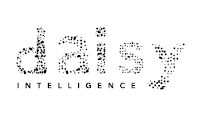
AI Becoming Insurers’ Key to Success in 2022
 Daisy Intelligence
Daisy Intelligence
With the rising level of sophisticated and dynamic schemes, fighting fraud can feel like a demanding uphill battle – especially as insurers are continuously pressured to provide faster and better service.
However, the demand on insurers is being assuaged with the use of increasingly prevalent anti-fraud technologies – which leading organizations are utilizing to eliminate emerging fraud threats and subsequently deliver on their mission.
Artificial intelligence (AI) is among the fastest growing of these anti-fraud technologies - analyzing and comparing millions of claim details to swiftly uncover fraud. It is exactly this level of proficiency that makes AI a key player in today’s anti-fraud programs.
This blog post will examine AI trends in today’s insurance space – demonstrating the growing demand for AI technologies in the fight against fraud – and will explore how insurers can get started with AI in their organization this year.
2022 AI Trends: How AI is Transforming the Industry This Year

In the 2022 anti-fraud technology benchmarking report conducted by the Association of Certified Fraud Examiners (ACFE), 884 respondents provided information regarding their use of technology as part of their organizations’ anti-fraud initiatives.
The responses clearly demonstrated a growth in the use of AI technology as part of anti-fraud initiatives, indicating that the use of artificial intelligence and machine learning in anti-fraud programs is expected to more than double over the next two years. What’s more, more than half of organizations already use automated monitoring of red flags and business analysis as part of their anti-fraud programs – which is expected to expand to more than two thirds of organizations over the next two years.
The rapid growth of technology in the insurance space can also be attributed to pandemic related challenges (i.e., growing levels of fraud), which pushed 40% of organizations to slightly or significantly increase their use of technology. Organizations are also budgeting for the expanded use of technology – with 60% expecting to either slightly or significantly increase their budgets for anti-fraud tech over the next two years.
With this rapid growth, its is clear AI and anti-fraud tools are propelling future-focused companies to success. In fact, users are already reporting significant benefits – with 99% of organizations seeing increased volume of transactions reviewed and improved timelines of anomaly detection as direct outcomes of implementing the technology. AI is here to stay and is undeniably becoming a key driver of success for those that are leveraging it.
Getting Started with AI: Critical First Steps
The data doesn’t lie: AI has become an intrinsic part of the industry - and will only continue to become a key strategy for success. As such, insurers that champion the vision of AI, and believe it is going to be imperative to compete, should get started on their implementation journey today.
A critical first step is to build trust in the technology - understanding that the role of the AI is to recommend and execute decisions based on human strategy. Humans are always in control of the technology and will not be replaced by the systems.
Additionally, it is important to understand that AI is not merely a project. AI is a significant transformation initiative, changing the way an organization operates. As such, it is important to engage the CEO and executive team – aligning them with the AI vision to ensure the entirety of the organization is prepared for implementation. Engaging the top levels of the organization will also significantly minimize any future change management issues.
Ultimately, the significant business outcomes AI offers will be readily obtained by insurers who get started today – especially those that are accompanied by an aligned executive team that fosters organizational trust in the technology.
The increased prevalence of AI is a trend that will only continue. With more than 50% of insurers already automating business processes, AI has become table stakes for those wanting to be leaders in today’s insurance space.
With trust and an executive team ready to bring the AI vision to fruition, those who get started with the AI journey today will discover the significant returns AI makes possible.
To discover practical steps to implement AI in your organization, download our whitepaper “Practical Approaches to Implement the Halo Effect into Claims Management Processes”.





